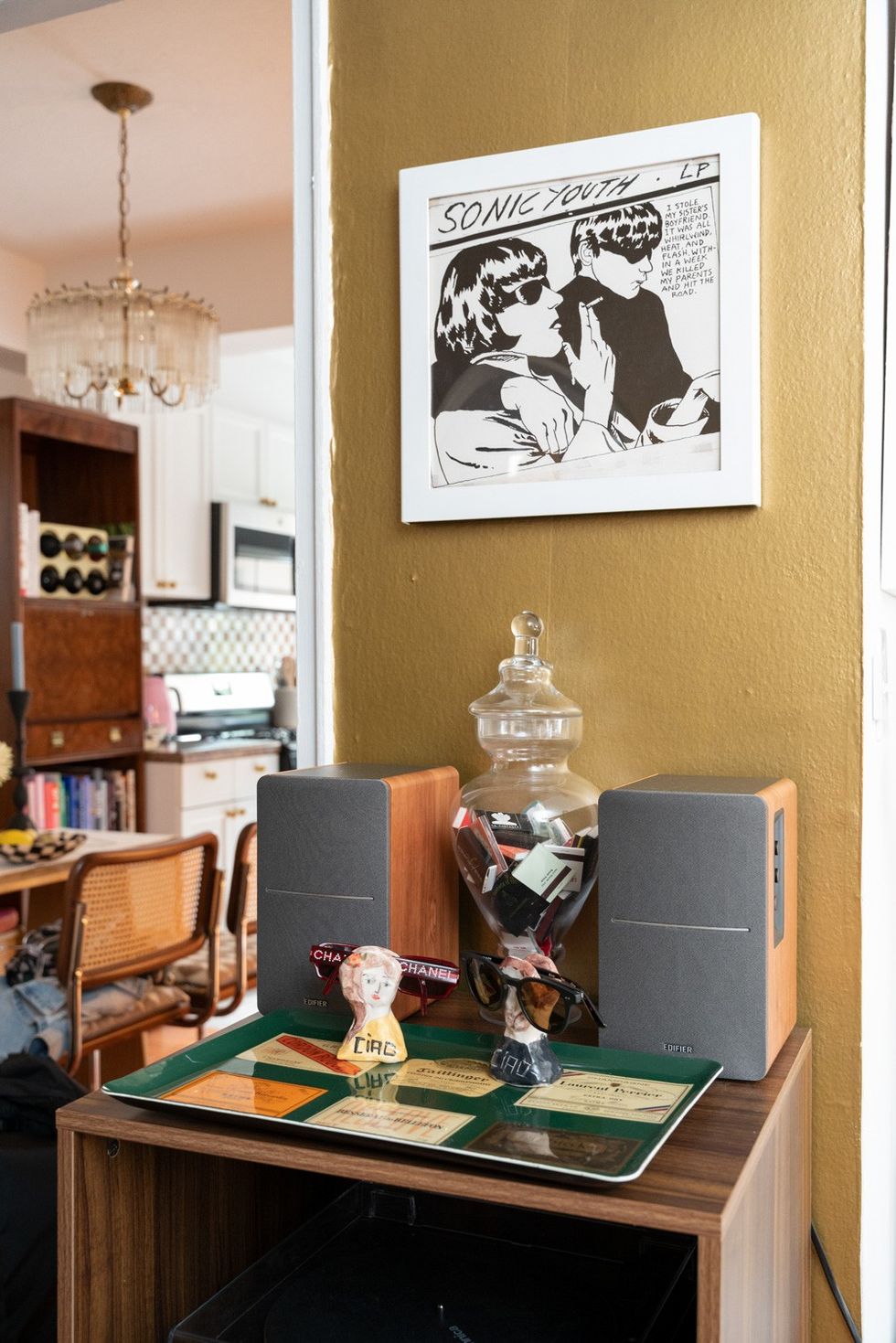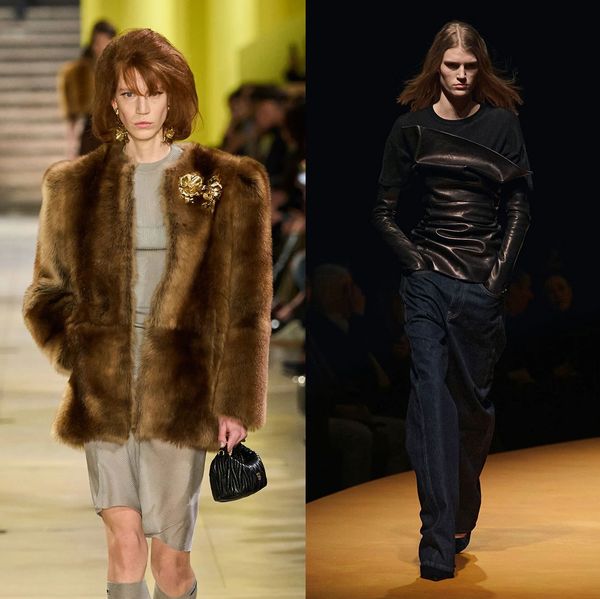Did You Really Go to That Restaurant If You Don’t Have the Branded Matches to Prove It?
Why match covers are the latest cool girl collection.

There’s a newfound consistency among the coffee tables of New York youth—and it’s not the latest grand photography tome. After squiggly candles and colored glassware, matches, or match covers, are the latest aesthetically pleasing objects to gather trendily on stylish surfaces. These burgeoning collections are as artistically inclined as a coffee table book but more interactive—at least in theory. And they don’t just prove your interests; they prove where you’ve been. All you need to bolster this hoarder’s habit is the wherewithal to snag a box from the hostess stand at the end of a great evening.
“Ever since I was little, I loved collecting, so it felt natural to pick up a small pack of matches (or two) from places I’ve been to,” Alex Bass, founder of fine art and interior design studio Salon 21, tells Coveteur. Her collection rests primarily in a decorative jar in her entryway, though she has a few match covers peppered throughout the apartment. The assemblage includes match covers from Miami Beach’s Joe’s Stone Crab, Los Angeles’ Hotel Bel Air, and New York’s Sant Ambroeus. Each face denotes a brand of some sort with an irresistible art treatment. Bass prefers the narrow rectangular matchboxes to the flimsier fold-over variety, but it’s more about the where than the what. Her criteria are simple: the bar/restaurant/place must prove worthy of remembering—”If I didn’t like the place, I won’t take the matches.”

Photo: Courtesy of Alex Bass
Tiny’s, a New American restaurant in Tribeca, recently began offering match covers “as a special, one-of-a-kind memento,” says owner Matt Abramcyk. “We hope they remind our guests of the fabulous evening out they had at Tiny’s for days to come.” Their fold-over matchbook bears the “Tiny’s” logo on its front. Pull the flap to reveal an image of the tiny pink townhouse, an allusion to the house which bears the life-size restaurant. “It’s a piece of the little pink townhouse in Tribeca that everyone can take home with them,” he explains. Restaurants across the city have reintroduced matches to their entryways, as have hotels, even stores. Nostalgic brand Bode offers a green cylindrical tube of matches in their Lower East Side tailor shop. My own collection features branded match covers from Miu Miu and Neiman Marcus events.
Bass exhibits her collection among many, like it on Oh What A Match, a site dedicated to the love of phillumeny, or the hobby of collecting different match-related items such as matchboxes, match covers, and matchbooks. Switzerland-based mother and daughter Nadia Tisone Cavallo and Alice Cavallo launched the corresponding Instagram account @oh_what_a_match in 2017 to document their collections. Both started amateur gathering interesting match covers during their respective youthful stints of living in New York City. A few years later, they began documenting collections like their own in their Match of the Day column. Chef Jeremy Lee, author, editor, and founder of magazine WM Brown Matt Hranek, and WSJ Style Writer Lane Florsheim, among many others, have shared the stories behind their budding collections. In reflection, the Cavallos note that restaurant matchboxes dominate the featured assemblages, followed by hotels—mementos of fun had. New York’s The Nines, The Odeon, and Via Carota each feature prominently across the site, boasting a trendy status and long waitlists for a reservation.
If I didn’t like the place, I won’t take the matches.”

Photo: Courtesy of Oh What A Match
Matchcovers’ souvenir-like quality extends beyond the immediate locale. Alice notes they’re “a little thing you can keep as a memento of a great night out with friends or a great trip” for a more diverse and covetable collection. Between their travels and their featured connoisseurs, the Cavallos have noticed the presence of matches growing in major cities, Paris in particular, due to a more intense smoking culture. Alice’s collection features a matchbox from Cafe de Flore, secured by a worldly friend. She collected a number on a trip to the Amalfi Coast, where they proliferate. Despite the grandeur of the featured names, “it’s not a costly hobby,” says Alice, though she admittedly bought a box of Celine matches online for $14. Containers of matches sit upon hostess stands as a bowl of breath mints would, free for the taking. Except they’re branded.
“Maybe they’re replacing the business card,” Alice posits. That’s exactly the purpose they used to serve back when smoking was rampant, and many appliances needed a flame to start. “Match covers were the major form of advertising in the first half of the 20th century,” notes Loren Moore, collector extraordinaire. Namely, because they were cheap to make—and they still are. He who does not frequent Instagrammable wine bars may acknowledge that matches have disappeared from most venues’ counters. Thanks to modern technologies and anti-smoking, Moore notes, “There have been over 600 match companies in America, and now there’s one.”

Photo: Courtesy of Oh What A Match
Moore counts himself among the match cover collectors that make up the Rathkamp Matchcover Society, a society dedicated to match cover collectors. “I’m a youngster in an organization, and I’m 72,” he laughs. These, he says, are collectors, whereas the aforementioned phillumenists are merely “accumulators.” The difference is nuanced but lies, as it would across any category, in organization and specificity of goals. “They throw these souvenirs of places they have been to in a large brandy snifter on a coffee table,” Moore says of accumulators. “They’re not necessarily interested in the overall collecting. They’re a lot more concentrated on identifying fun, nice places that they’ve gone to.”
His collection, documented on his site, features match covers that advertise everything from A&W root beer to Crosley refrigerators to Newton’s Military Store. Today, he has rid himself of almost all of his tens of thousands of match covers and only focuses on collecting a match cover with every 4-digit phone number in existence. Throughout the years, he tucked everything away in albums, unlike the “accumulators” who keep everything on display. “They’re a great way to preserve a memory and add some decorative elements to your space simultaneously,” Bass counters of her approach. Alice and Nadia store theirs in resin cases (which they produce themselves) in their homes. Of their featured collectors, they note some group by color, while others let their displays run amuck. “They are meant to decorate your home,” explains Alice, not to keep them in a “secret folder.” The one thing everyone can agree on? The exclusion of function from the equation. No one here is lighting a cigarette with their matches; they’re too precious for that. “I like to look and not touch,” says Bass, “so as to not use them all up!”




